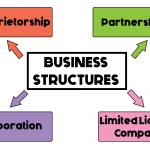Do you use the words “invoice” and “bill” interchangeably? You’re not alone. However, although they are somewhat similar in meaning, there are important distinctions between the two terms.
This article will explain those differences and why you need to know about them.

What Is an Invoice?
An invoice is a record – either in digital or paper form – that describes and itemizes services performed or products sold. Companies often send invoices to collect payment on products or services they have already supplied to their clients or customer.
The business document usually includes the date of the invoice, description of the goods or services, the date the service or product was provided, business contact information, client contact information, the date payment is due, and, if applicable, the most recent payment on the account.
An invoice also may include payment terms, such as single or monthly payment options. Invoices usually have transaction numbers that businesses and customers alike use in their bookkeeping records or for tracking purposes.
What Is a Bill?
On the other hand, a bill is a document that requests immediate payment for a one-time service received or a product purchased. A bill typically does not include a due date or any payment terms because full payment is expected at the time the product or service is provided. A bill may or may not contain a transaction number.
For example, you receive a bill when you have finished your meal at a restaurant because you are expected to pay before you leave. However, your lawn service company sends you an invoice for services already provided, and you are expected to pay the amount by a specific date (often 30 days).
What Are the Key Differences Between an Invoice and a Bill?
Here is a summary of the primary differences between an invoice and a bill:
Details of the transaction: Bills are sent for services or products that require quick payment, such as a restaurant meal or a computer repair. The document does not include terms of payment or the name of the customer. In contrast, service suppliers often issue invoices that include a description of what was provided, the name and contact information of who purchased it, and the terms for payment.
Type of documentation: Since bills request immediate payment, they are issued at the point the product or service is delivered. However, an invoice can be issued during the production process. Copies of an invoice often are included in a package – even if it has already been paid – as a form of documentation of the purchase.
Transaction numbers: A bill does not necessarily have an order or transaction number, but an invoice does. The unique number helps companies and customers keep track of the purchase in their financial and tracking systems.
Payment: Since the immediate payment of a bill is expected, the document typically does not include payment terms. Invoices often specify the amount of each payment and when it is due.
FAQs About Invoices and Bills
Here are some questions people often have about invoices and bills.
Is an invoice the same as a financial statement?
No. An invoice and a financial statement are not the same. A financial statement is a written record of all money transactions within a fiscal period, including the income statement, cash flow statement, and balance sheet. Invoices are recorded as accounts receivable in a company’s financial statement.
Is a statement the same thing as a bill?
No. A statement is not the same as a bill. A statement is a document that lists and itemizes unpaid invoices. On the other hand, a bill is a document requesting a single payment for services or goods that have just been rendered.
Another way to distinguish between these two terms is that a client treats a bill as an accounts payable, while a statement is an informational document.
Is a receipt the same as a bill?
No. These terms have different meanings. A receipt is written or digital proof that payment has been received. A bill is a written or digital record of outstanding charges that must be paid immediately. A business might issue a receipt to a customer to show their bill has been paid.
What’s the difference between an estimate and an invoice?
These documents are also somewhat similar but have a key difference. While an invoice requests payment for products or services provided, an estimate outlines a proposed amount those products or services would cost a client.
A business might provide a client with an estimate before beginning any work on the job. After the work is completed, the business will provide an invoice that indicates when payment is due.
Takeaway
In conclusion, whether you are making decisions for yourself or your company, it is essential to understand the meaning of key business terms. Knowing the difference between a bill and an invoice and using the appropriate document at the right time can help you receive payments faster, better manage your cash flow, and reduce the stress of payment collection.











